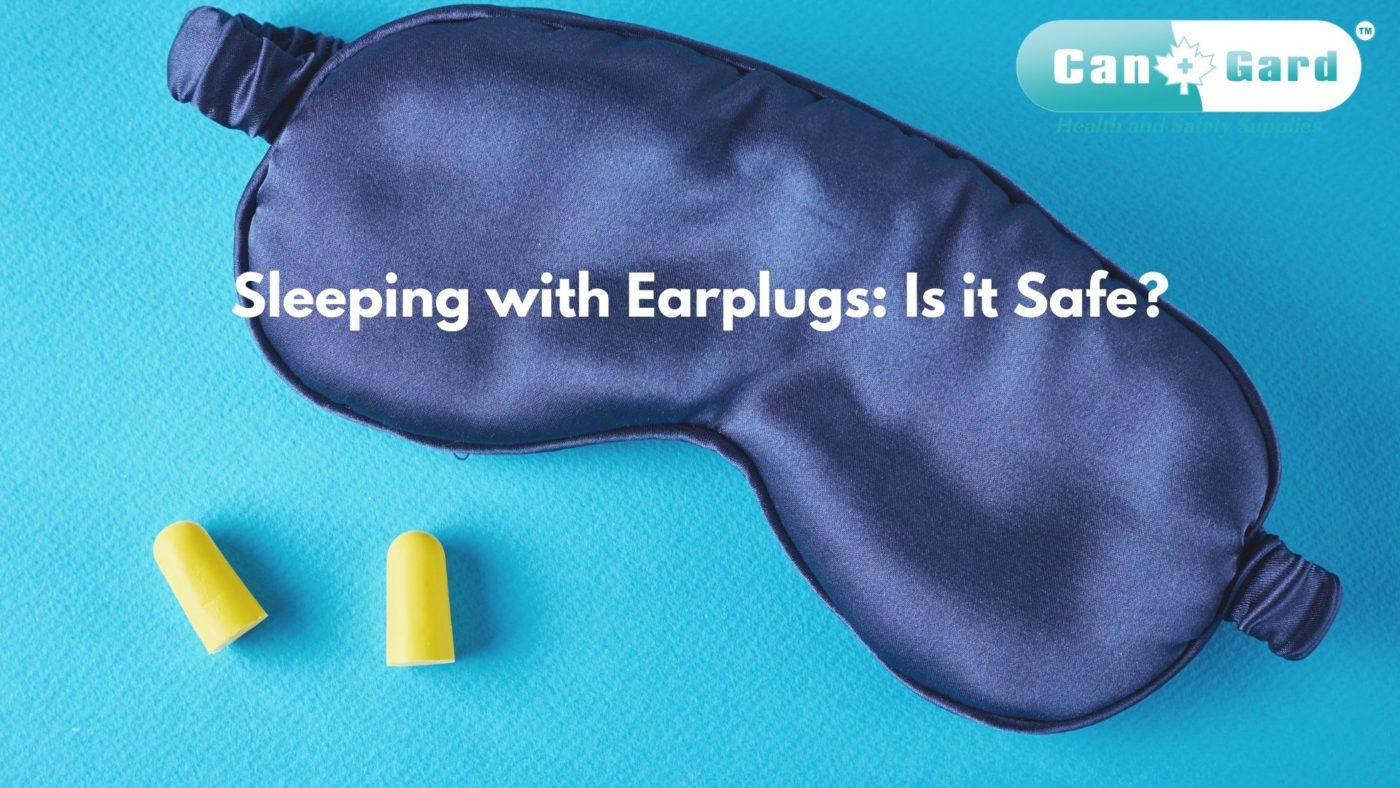Hearing Protection
Sleeping with Earplugs: Is it Safe?
Earplugs are hearing protection devices that can be used to block out the noise coming from your surroundings. The most common use for earplugs is sleeping, but they can also be used in many other contexts, such as concerts and other noisy environments. Sleeping with earplugs may seem like a good idea because it blocks out all of the noise around you, but is this safe? We will go over everything you need to know about sleeping with earplugs!
What are Earplugs For?
Earplugs are designed to be inserted into the ear canals and block out any sound. This is done in order to protect one’s hearing from being damaged by too much noise exposure, such as a loud concert or construction site. It also helps someone who has tinnitus – ringing in the ears that doesn’t go away when exposed to too much noise.
What are Earplugs Made Of?
Earplugs are made of various materials, such as foam or silicone, and come in many shapes and sizes. Earplugs should be inserted into the ear canal so that they block all sound from entering while still being comfortable to wear for long periods of time. Since sleeping is very personal, it’s crucial to find the earplugs that work best for you.
So, is it Safe to Sleep with Earplugs In?
While some of us need the help of earplugs to sleep soundly, others might be wondering if sleeping with earplugs is safe. The answer to that question, unfortunately, isn’t straightforward and depends on whether you are using the plugs for sleep apnea or other purposes. Sleeping with hearing protection can help some people.
In some instances, sleeping with earplugs is not only dangerous but can also be quite uncomfortable. If you sleep on your back or side, the earplug will push against your pillow, and it may cause discomfort in other parts of your body that are touching the pillow as well. Sleeping on one’s stomach doesn’t have this problem because the weight is not shifted to your face side. Sleeping with earplugs is also not safe for children because it may lead to suffocation if they roll over or move in their sleep.
Different Types of Earplugs
Noise-Cancelling Earplugs
Noise-cancelling earplugs are the most effective type of earplugs to use at night time because they block out all the sound coming from your surroundings. You can sleep in peace without having any worries about what is happening around you and will wake up feeling refreshed. Keep in mind, though, that sleeping with earplugs this effective may make you miss your alarm!
Noise-Reducing Earplugs
If noise-cancelling earplugs are unavailable or you don’t want to completely block the noise around your for safety purposes, noise-reducing earplugs are a good idea. These earplugs block out the sound coming from your surroundings so you can sleep in peace but still get to hear emergency situations if they happen around you! You can opt for noise-reducing earplugs that have a noise reduction rating of about 23 decibels. The earplugs will not block all the sounds, but it does reduce them to a safe level so you can sleep with peace without any worries.
Foam Earplugs
The most affordable earplugs in the market are foam earplugs. These are disposable, so it is more sanitary compare to other earplugs. The foam plugs are also the most flexible type of earplug, so it is easy to use and mould inside your ears. With these, you can choose from a variety of sizes, colours, and shapes, and they are available in disposable packs or pre-moulded packages. Earplugs come in various shapes and sizes to suit your needs – from small, medium, large or extra-large – so you can find them easily! They range between 12 decibels to 33 decibels in noise reduction rating, respectively. Foam earplugs block out the lower frequency of noise levels.
Moldable Silicone Earplugs
Moldable silicone earplugs are the perfect solution for people with hearing aids because they can be moulded to fit the shape of your ear canal. They are also great for blocking out low-frequency noise levels like snoring, machinery, and traffic sounds. Moldable silicone earplugs block out lower-frequency noises while allowing higher frequencies to come through, so you don’t miss anything important!
Earplugs for Kids
For kids who have a tendency to be triggered by noise, it is very fortunate that there are earplugs designed for children. These earplugs can also be used by adults who need hearing protection while sleeping or studying in a noisy environment.
Earplugs for Travel
Earmuffs offer the perfect solution to protect your ears from any loud noises during flights, long drives, and public transportation rides so you can get some sleep!
Flanged Earplugs
Flanged earplugs are another type of earplug that is designed to fit into the outermost parts of the ears. They are an excellent option for those who have trouble keeping other types of plugs in!
Wax Cotton Roll-on Pads
Wax cotton roll pads are an option for those who have trouble with earplugs. This type of hearing protection is disposable, so you can use them for a short time and then discard them.
Silicone Earplugs
Silicone earplugs are also another popular option that offers some advantages over other types of hearing protection choices because they follow the form and shape of your ears. If sleeping with earplugs is a habit for you, consider the moldable version of these.
Custom-Molded Earplugs
Custom-molded earplugs are a great option for those who have hearing problems or trouble with the other types of plugs. These are made to fit your ear perfectly!
The material of the earplug will also help to determine how well it protects your hearing. If you are looking for a product made out of soft silicone, they may not be as effective at blocking noises such as machinery or gunfire as other materials would offer. Your purpose of using an earplug will help determine which type of earplug is best for you.
How to Use an Earplug Effectively
To maximize the efficiency of earplugs, make sure they are clean, dry, and not broken. If you have trouble hearing with your earplug in the canal, then it may be too tight or too loose for your ears. Try to find an option that fits better! It is important to feel comfortable when wearing earplugs so you can fully enjoy the experience.
When inserting earplugs into the outer area of a person’s left or right ear, there is a normal experience of hearing a “whooshing” sound. This is because the earplug is filling up space on either side of your eardrum, so it’s not possible for you to hear anything else coming into that opening in your head. The feeling or sensation of hearing loss will go away as soon as an individual takes out their earplugs.
Sleeping with Earplugs a Must? Find the Best Products at CanGard
The safest way of sleeping with earplugs that will be comfortable and won’t cause any health problems is by using an earplug that is designed for sleeping. At CanGard, you can find a variety of earplugs that are designed for all sleeping positions.
Article Updated 2023-10-18.

